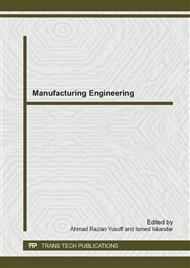p.309
p.315
p.321
p.327
p.332
p.338
p.347
p.353
p.359
Analysis on the Optimal Geometrical Parameters of Topology Power Optimized Coil Based on a Cylindrical Magnet for Vibration-Based Electromagnetic Energy Harvester
Abstract:
This paper presents the analysis on geometrical parameters of the power-optimized coil based on Faradays principle by maximizing the coverage of magnetic flux linkage by the coil using a cylindrical permanent magnet of 6 mm diameter and 6 mm height. Faradays law states that induced voltage is the rate of change of flux linkage, meaning more winding induces more voltage. However it will increase also the resistance of the coil because the length of copper wire will also increase, which will reduce the generated power and power-density by the harvester according to Joules and Ohms laws. Simulation is used to virtually wind the inner and outer geometrical parameters of the coil using the given boundaries and the dimensions with highest output power are determined. The proposed form of the coil is cap-like shape which covers top half of the magnet where the amount of surrounding magnetic flux linkage is maximal. The result showed the induced power could be improved up to 60% using this method compared to usage of conventional ring-shaped coils.
Info:
Periodical:
Pages:
332-337
Citation:
Online since:
February 2014
Authors:
Keywords:
Price:
Сopyright:
© 2014 Trans Tech Publications Ltd. All Rights Reserved
Share:
Citation:


